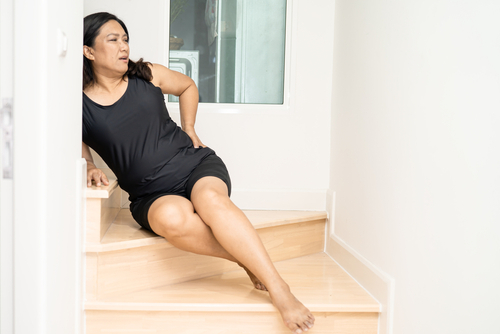When Rain Creates Risk: Understanding Your Rights After a Weather-Related Fall
The afternoon storm clouds roll in, and within minutes, Miami’s sidewalks transform into slippery hazards. If you’ve been injured in a slip and fall accident during or after a thunderstorm, you’re likely dealing with pain, medical bills, and questions about who’s responsible. Property owners have specific legal obligations to maintain safe premises, even during Florida’s unpredictable weather. Understanding these responsibilities and your rights as an injured person can make the difference between bearing the financial burden alone and receiving fair compensation for your injuries.
💡 Pro Tip: Document weather conditions immediately after your fall – take photos of the wet surface, any drainage issues, and check local weather reports for that day. This evidence can be crucial in establishing the property owner’s knowledge of hazardous conditions.
The Soffer Firm has been voted Super Lawyers "Rising Star" and "National Trial Lawyers – Top 40 Under 40" multiple years because of our dedication to clients. We work on a contingency basis, meaning we don’t get paid unless you do. Our track record includes millions recovered for our clients. Our Florida personal injury lawyers are here to guide you through your legal case. Contact us today at 305-503-5634.
Property Owner Duties During Florida Thunderstorms
Under premises liability law, property owners, occupiers, and those who control real estate must ensure their property remains reasonably safe for guests, customers, and visitors. This legal duty doesn’t disappear when storm clouds gather. In fact, Florida’s frequent thunderstorms mean property owners should anticipate and prepare for wet conditions. When seeking help from a slip and fall lawyer in Miami, understanding these fundamental duties helps build your case.
To establish liability for your thunderstorm-related fall, you must demonstrate one of three conditions existed. First, the property owner or employee directly caused the hazardous condition – perhaps by failing to maintain proper drainage systems. Second, they knew about the dangerous wet conditions but failed to address them. Third, they should have known about the hazard because a reasonable person maintaining the property would have discovered and remedied it. This concept of constructive knowledge becomes particularly important in weather-related cases, as property owners can’t claim surprise when rain creates predictable hazards.
💡 Pro Tip: Property owners often have maintenance logs and inspection records that can prove they knew about drainage problems or areas prone to flooding. Your attorney can request these documents during the discovery process.
The Timeline: From Storm to Settlement
Understanding the process of pursuing a slip and fall claim after a thunderstorm incident helps set realistic expectations and ensures you don’t miss critical deadlines. The path from injury to resolution involves several important phases, each with specific requirements under Florida law. Working with a slip and fall lawyer in Miami ensures you navigate each stage properly while focusing on your recovery.
- Immediate aftermath (0-24 hours): Seek medical attention, report the incident to property management, document everything including weather conditions and witness information
- Evidence preservation (1-7 days): Return to photograph the area in dry conditions, noting any permanent hazards like poor drainage or missing handrails that contributed to your fall
- Initial investigation (1-4 weeks): Your attorney investigates maintenance records, reviews weather data, and identifies similar past incidents at the location
- Demand and negotiation phase (2-6 months): After establishing liability and damages, negotiations begin with the property owner’s insurance company
- Litigation if necessary (6+ months): If fair settlement isn’t reached, filing a lawsuit initiates the formal legal process, including depositions and potential trial
💡 Pro Tip: Florida’s statute of limitations for negligence claims is now two years from the date of your accident. However, evidence quality deteriorates quickly, especially for weather-related incidents, so starting your claim promptly gives you the strongest position.
Finding Resolution with an Experienced Slip and Fall Lawyer in Miami
Resolving a thunderstorm slip and fall case requires proving the property owner failed in their duty to maintain safe conditions during predictable weather events. The Soffer Firm understands the unique challenges these cases present, from establishing constructive knowledge to countering common defenses like the "open and obvious" doctrine. Property owners often argue that rain-slicked surfaces are obviously dangerous, but this defense fails when specific hazards like inadequate drainage, missing handrails, or poor lighting compound the natural slipperiness of wet surfaces.
Success in these cases often hinges on demonstrating that the property owner should have anticipated and addressed specific hazards that become dangerous during storms. This might include proving they knew certain areas flood during heavy rain, that gutters regularly overflow onto walkways, or that outdoor surfaces lack proper anti-slip treatments. A thorough investigation revealing patterns of negligent maintenance strengthens your position significantly when negotiating with insurance companies or presenting your case to a jury.
💡 Pro Tip: Insurance companies often offer quick, lowball settlements hoping you’ll accept before understanding your case’s full value. Having legal representation ensures you don’t settle for less than fair compensation for your medical bills, lost wages, and pain and suffering.
Critical Evidence in Weather-Related Slip and Fall Cases
Building a strong thunderstorm slip and fall case requires specific evidence that goes beyond typical accident documentation. Weather data becomes crucial, as official records from the National Weather Service can establish exact precipitation amounts and timing. This information helps counter property owner claims that the storm was unexpected or unusually severe. When combined with maintenance records showing knowledge of drainage problems, this weather data creates a compelling narrative of negligence.
Surveillance Footage and Weather Patterns
Many properties have security cameras that capture not just your fall, but also the conditions leading up to it. This footage might show water pooling for hours, other people struggling with the same hazard, or staff members observing but not addressing the dangerous condition. Video evidence proving staff knew about standing water but failed to place warning signs or address the hazard directly supports your claim. When working with a slip and fall lawyer in Miami, obtaining this footage quickly is crucial as many systems overwrite data within 30 days.
💡 Pro Tip: Request surveillance footage in writing immediately after your accident. Include specific time ranges starting at least two hours before your fall to capture the hazard’s development and any employee awareness.
Common Defenses and How to Overcome Them
Property owners and their insurers often employ predictable defense strategies in thunderstorm slip and fall cases. Understanding these tactics helps you and your attorney prepare effective counterarguments. The "act of God" defense claims the storm was an unforeseeable natural event, but this fails when regular Florida thunderstorms create predictable hazards the owner should have anticipated and addressed through proper maintenance and safety measures.
The Comparative Negligence Challenge
Florida’s comparative negligence law means the property owner will scrutinize your actions before the fall. They’ll claim you were distracted, wearing inappropriate footwear, or should have noticed the obvious wet conditions. However, when proving fault in slip and fall accidents, your attorney can demonstrate that even careful pedestrians can’t avoid hidden hazards like algae growth that becomes dangerously slippery when wet, or sudden drop-offs where water accumulates. The key is showing that while you exercised reasonable care, the property owner’s negligence created an unavoidable hazard.
💡 Pro Tip: Be honest with your attorney about the circumstances of your fall, including what shoes you wore and whether you were using your phone. This allows them to address potential weaknesses proactively rather than being surprised during litigation.
Frequently Asked Questions
Understanding Thunderstorm Slip and Fall Liability
Many accident victims share similar concerns about pursuing compensation after weather-related falls. Understanding the legal framework helps you make informed decisions about your case.
💡 Pro Tip: Keep a injury journal documenting your pain levels, mobility limitations, and how the injury affects your daily life. This personal record strengthens your damage claims beyond just medical records.
Next Steps After Your Thunderstorm Accident
Taking the right actions after your fall protects both your health and your legal rights. Understanding the process helps reduce anxiety and ensures you’re prepared for each phase of your claim.
💡 Pro Tip: Save all receipts related to your injury, including parking fees for medical appointments, over-the-counter medications, and mobility aids. These small expenses add up and are recoverable in your claim.
1. Can property owners claim they’re not responsible because the thunderstorm was an "act of God"?
While property owners may attempt this defense, Florida law still requires them to maintain reasonably safe premises during predictable weather events. Afternoon thunderstorms are common in Miami, so property owners should have proper drainage, anti-slip surfaces, and procedures for managing wet conditions. The "act of God" defense typically fails when the owner could have prevented the hazard through reasonable maintenance and preparation.
2. How does Florida slip and fall statute 768.0755 affect my thunderstorm accident claim?
This statute requires you to prove the business had actual or constructive knowledge of the dangerous condition. In thunderstorm cases, constructive knowledge can be shown by proving the wet condition existed long enough that employees should have discovered it, or that similar conditions occur regularly during storms. Documenting how long water accumulated and whether the property has recurring drainage issues strengthens your claim under this statute.
3. What if the property owner placed a "Caution: Wet Floor" sign near where I fell?
Warning signs don’t automatically absolve property owners of liability. While signs show some effort to warn visitors, owners must still take reasonable steps to actually remedy the hazard. If the dangerous condition persisted for hours despite the warning, or if the sign didn’t adequately identify the specific hazard (like invisible algae growth or a sudden drop-off), you may still have a valid claim.
4. How long do I have to file a slip and fall lawsuit in Florida after a thunderstorm accident?
Florida’s statute of limitations for negligence claims is two years from the date of your accident. However, evidence quality deteriorates quickly in weather-related cases. Surveillance footage may be overwritten, witnesses’ memories fade, and the property owner might make repairs that eliminate evidence of the hazard. Starting your claim promptly with legal representation ensures the strongest possible case.
5. What damages can I recover in a Florida slip and fall claim involving thunderstorm conditions?
You can seek compensation for all losses related to your injury, including medical expenses (current and future), lost wages, loss of earning capacity, pain and suffering, and loss of enjoyment of life. In cases involving particularly egregious negligence, such as ignoring known drainage problems for years, punitive damages might also be available. An experienced attorney evaluates all potential damages to ensure you seek appropriate compensation.
Work with a Trusted Slip and Fall Lawyer
Thunderstorm slip and fall cases require thorough investigation and strategic legal advocacy. Property owners and their insurance companies often dispute these claims aggressively, arguing that rain makes all surfaces obviously dangerous. However, with proper legal representation, you can demonstrate how specific negligent conditions – beyond just wet surfaces – caused your injury. The combination of weather data, maintenance records, and witness testimony builds a compelling case that the property owner failed to meet their duty of care during predictable Florida weather conditions. Understanding your rights and the legal process empowers you to seek the compensation you deserve for injuries that could have been prevented through reasonable property maintenance and safety measures.
The Soffer Firm has been voted Super Lawyers "Rising Star" and "National Trial Lawyers – Top 40 Under 40" multiple years because of our dedication to clients. We work on a contingency basis, meaning we don’t get paid unless you do. Our track record includes millions recovered for our clients. Our Florida personal injury lawyers are here to guide you through your legal case. Contact us today at 305-503-5634.

